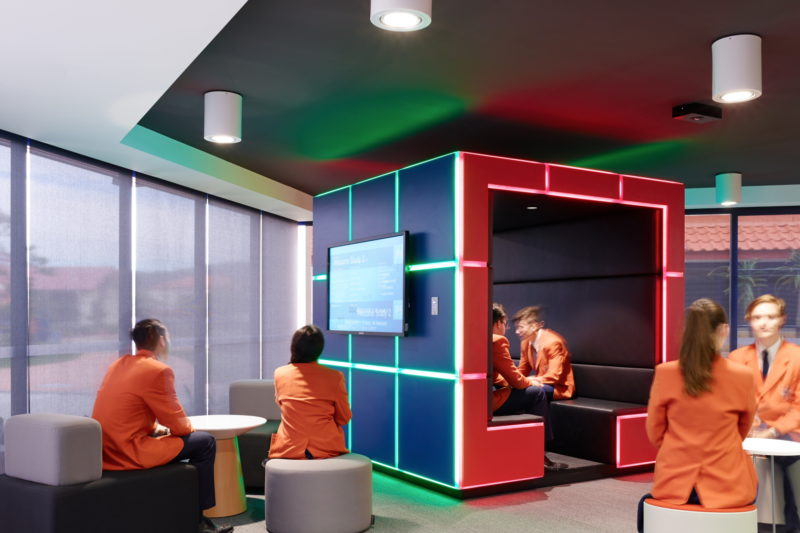How gamification is driving learning space design

Schools are reimagining how their learning spaces reflect new instructional approaches
Gamification is moving from simple novelty to a valid pedagogical approach that can deliver powerful learning experiences in higher education and K-12 classrooms alike—and this growth has led to changes in how educators approach their classrooms and physical learning spaces.
Today’s students demand engaging educational experiences and thrive on stimulation and immediate feedback. As games become integrated into learning, game developers are realizing that many gaming attributes—e.g. challenges, rewards, and collaboration—have relevance in the classroom, too.
Part of what’s buoying this change is the fact that instructional models are changing—the sage on the stage model no longer aligns with the way today’s students wish to learn, said Robert Brodnick, founder of Brodnick Consulting Group. Brodnick also is principal at Strategic Initiatives, a management consulting firm, and has served as an administrator and faculty member at three universities. Mainly, his work has focused on building institutional capacity and effectiveness through strategy, planning, and innovation.
Gamification, typically defined as taking elements of game play and adding them to a non-game activity, can be done in different ways, and it’s becoming much more acceptable. Common mechanics include earning points, earning badges, completing and advancing through levels, and moving through challenges or pathways.
“What is so interesting—and this is the real driving force behind why gamification is hitting the learning environment—is that the more people engage in something, the more easily they learn or adapt to it,” Brodnick said. “Gamification, the fun side of serious play, really gets people engaged. It opens us up in new ways. It’s very different than content collection and testing based on your ability to remember something.”
Most gamified learning experiences are set in a narrative or story where the learner plays a role and must become personally engaged to understand how the game unfolds and to successfully complete it, he added. “It’s that storytelling component that helps deepen the engagement and drive motivation.”
About a year ago, Brodnick partnered with KI, a company that helps industries including education equip their physical spaces based on information about current and future trends and needs. In helping KI discover what was and would be impacting learning spaces, Brodnick identified key trends impacting learning journeys.
Leave a Reply
You must be logged in to post a comment.




